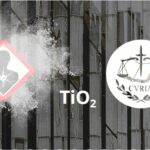
Contributions to the consultation on the definition of “nanomaterial”
The European Commission published the 136 contributions1[NDLR] Initially published on the following link https://ec.europa.eu/environment/pdf/chemicals/nanotech/TSC_Nanodefinition_PublicExcerpt.xlsx, they seem to have disappeared from the European Commission’s website; AVICENN had downloaded them in 2021 and has decided to upload them to veillenanos.fr in order to keep track of the positions defended at that stage by the stakeholderscollected as part of its consultation on the definition of the term “nanomaterial”, as well as additional contributions from French authorities, the Industrial Minerals Association (IMA) and the German Federal Institute for Risk Assessment (BfR).
The Commission said it is conducting a “detailed analysis” with the goal of publishing a summary and statistical analysis of the responses by the end of 2021, as well as its plans for the potential revision or replacement of the current definition recommendation.
Other news on the topic
Upcoming Nano Agenda

- Webconference for analysis laboratories, plant fertilizer manufacturers and distributors, public authorities…
- Moderated by David Krupka, nanotechnologies development manager at AFNOR Normalisation and Emilie Langlois-Bertrand, nantechnologies standardization project manager.
- In partnership with Armand Masion, CNRS Research Director, and Sandrine Mocoeur, Health, Safety, Environment and Quality Manager at SYNGENTA.
- This exchange will also be an opportunity to explore the creation of a national platform to identify standardization needs.
- Website: www.afnor.org/evenement/nanotechnologies-agriculture-cadre-pratique-responsable/
- 8th Congress of Occupational Medicine and Health (CNMST 2026)
- Theme 5: Emerging pathologies and risks, Mr Henri Bastos (ANSES), Pr Lynda Bensefa-Colas (AP-HP), Dr Catherine Nisse (CHU Lille)
- Website: www.medecine-sante-travail.com
- 20th meeting of the “nano and health” dialogue committee
- Organizer: ANSES
Notes and references
- 1[NDLR] Initially published on the following link https://ec.europa.eu/environment/pdf/chemicals/nanotech/TSC_Nanodefinition_PublicExcerpt.xlsx, they seem to have disappeared from the European Commission’s website; AVICENN had downloaded them in 2021 and has decided to upload them to veillenanos.fr in order to keep track of the positions defended at that stage by the stakeholders



